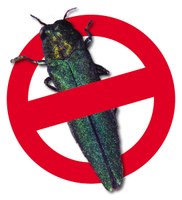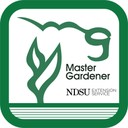Emerald Ash Borer - Overview/Background

Emerald ash borer (EAB) was introduced to the Detroit, Michigan, area in the mid-1990s. Since then, it has spread outward in an ever-expanding infestation. EAB is not a strong flier, so long-distance travel has been through people – movement of infested firewood, wood products and nursery stock. One big lesson that we’ve learned is ‘Don’t Move Firewood’, or ‘Buy it where you burn it’: http://www.dontmovefirewood.org/. For the latest map showing the current location of EAB, go to: http://www.emeraldashborer.info/files/MultiState_EABpos.pdf.
EAB attacks all ash (genus Fraxinus) species that are native to the U.S. [It does not attack mountain-ash trees, as they are not true ash species, but instead are in the genus Sorbus.] EAB has a major impact on those communities with a heavy reliance on ash. In North Dakota, many communities’ urban forests are comprised of more than 50% green ash; in some towns that number approaches 80%. The importance of diversification can’t be stressed enough. For more information on trees that are adapted to North Dakota, see the ND Tree Selector at: http://www.ag.ndsu.edu/tree-selector/.
Additional information about EAB is available from the ND Department of Agriculture at: https://www.nd.gov/ndda/plant-industries/pest-survey-and-outreach/emerald-ash-borer-eab. For more information about tree pests such as Dutch elm disease, gypsy moth, and others, please visit the ND Invasives website at: http://www.ndinvasives.org/.





